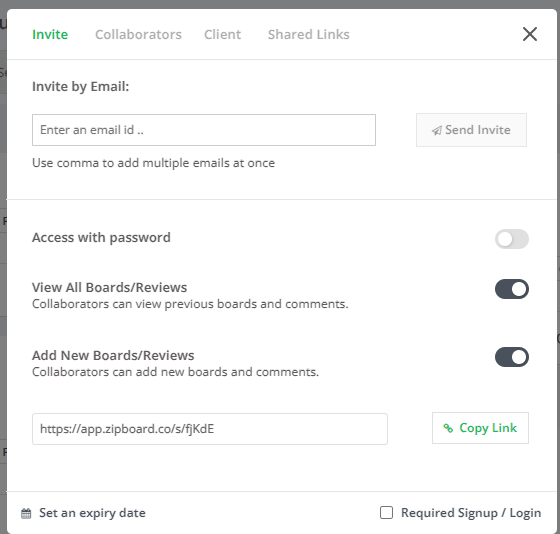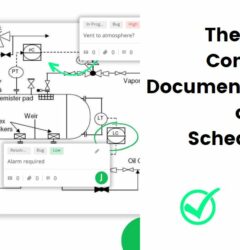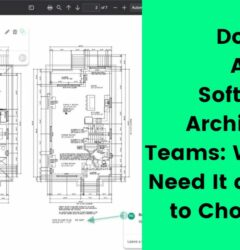13 Common Architectural Firm Mistakes (+ How to Avoid Them) – Free Guide
30 Oct

Table of Contents
ToggleThe architecture industry is complex and demanding. And with principals and architectural executives overseeing projects and managing operations, they’re prone to making common architectural firm mistakes that can cost and threaten the success of their projects and to a larger extent their firms.
With everything already falling on their plate, Principals or executive teams are responsible for managing the operations at almost 90% of the surveyed firms. Meanwhile, only 15.3 % of surveyed firms have a dedicated operations team/person
Monograph, 2021 Best Practice Report: Architecture Statistics and Trends
Architectural firms juggle a variety of tasks, including meeting client needs, staying on budget, and delivering high-quality designs. While architects are highly skilled professionals, they are not immune to making mistakes.
Costly mistakes can happen at any stage of a project, from the initial design phase to the final construction phase. These mistakes can be caused by factors, such as poor communication, inadequate planning, and human error.
While it is impossible to eliminate all mistakes, there are a number of things that architectural firms can do to reduce the risk of costly errors.
Continue reading or download the free guide to learn about the 13 common mistakes that your architectural firm will likely make or is probably swimming in already. You’ll also find tips, best practices, and resources to help avoid the mistakes.
13 Common Costly Mistakes Architectural Firms Must Avoid
Neglecting Client Needs and Preferences
One of the most common mistakes architectural firms make is neglecting the needs and preferences of their clients.
This can happen for reasons such as a lack of communication, a focus on the aesthetics of the design over functionality, or simply not taking the time to understand the client’s needs.
Additionally, architects sometimes design what they think their clients should want, instead of actively listening to what the client actually wants and designing according to their needs and preferences.
To avoid this mistake, your architectural firm must communicate effectively with clients throughout the design process. You should also take the time to understand the client’s needs and preferences and make sure that the design meets those needs.
Furthermore, architects can employ collaborative listening to understand the needs of all stakeholders in the project. This can be a meeting including the client, architect, contractor, and any other parties involved in the project.
By employing collaborative listening, architectural firms can identify potential problems early on and avoid costly mistakes.
Inadequate Client and Stakeholder Communication
Inadequate client and stakeholder communication is a common costly mistake that can lead to problems, including misunderstandings, delays, overruns, and dissatisfaction.
Without open and clear lines of communication on design projects, architects risk making the mistake of not communicating effectively with their clients and other stakeholders involved in the project.
Effective collaboration and communication help to avoid misunderstandings, delays, and costly mistakes.
To avoid inadequate client and stakeholder communication and the consequences that come with it, it’s important to communicate regularly, clearly, and concisely throughout the project. It also means being responsive to inquiries and feedback.
It’s worth noting that communicating regularly can be nuanced and may differ from project to project and client to client. However, it’s great to have guidelines or a plan to guide communications throughout the project.
How often should you communicate? When should updates be sent? Which communication channels are we using? Etc.
Not Staying Updated with New Technology
Technology is constantly changing, and architectural firms must stay up-to-date with the latest hardware and software in order to be competitive.
New technologies can help architectural firms to improve their efficiency and productivity, and to create more innovative designs. So not staying abreast with technology means setting your firm and colleague architects up for failure.
To stay updated with the latest technology, architectural firms should invest in training for their staff, and attend industry events and conferences. You should also read industry publications and blogs.
Not Investing in Technology
There are a number of software applications available that can help architectural firms improve their design operations, project management, and other business processes.
However, some firms choose to use integrated spreadsheets instead of investing in dedicated software. Integrated spreadsheets can be a cost-effective solution for small firms, but they can be limiting for larger firms.
Dedicated software applications can help architectural firms to improve their efficiency and productivity, and to reduce the risk of errors.
It’s worth noting that not considering off-site backup for files, practice management information systems, not investing in software for design operations, project management, and document management, not using a practice management information system, and assuming your document filing system works for you – are some of the technological mistakes that architecture firms are prone to.
Sometimes, you may not see it from the inside because you’re so used to the manual processes. However, this usually ends up costing your firm time and money.
The solution to avoiding this ties into the solution of staying up to date with new technology by attending industry events and reading publications. However, for this, you would also want to consider existing solutions.
Avoiding Scope Creep
Scope creep is the gradual expansion of a project’s requirements, features, or functionalities beyond its original scope. And avoiding scope creep is one of the most common and costly mistakes that architectural firms make.
When architecture firms neglect scope creep management, this often leads to budget overruns, project delays, misallocation of resources, difficulty in project monitoring, and stress and burnout.
To avoid scope creep, architecture firms need to plan for future changes and keep the project in check at regular intervals.
This can be done by clearly defining the project scope in the contract and letting the client know at the beginning of the project.
Additionally, it’s good to communicate regularly with the client throughout the project to keep them updated on the status of the progress, as well as to identify any potential changes to the scope.
Furthermore, having a process in place for managing changes to the scope of work and setting realistic deadlines and budgets can help deal with scope creep consciously and intentionally.
Not Tracking the Progress of Projects
One common architectural mistake is failing to monitor the progress of projects adequately. This oversight can have far-reaching consequences, potentially leading to project delays, budget overruns, a decline in work quality, and inefficiencies in project workflows, ultimately squandering valuable time and resources.
To avoid these pitfalls, it is essential to implement a robust system for tracking the progress of your architectural projects. This comprehensive tracking approach encompasses time spent, progress toward milestones, and budget management.
You can use timesheets or time-tracking tools and project management software that integrates seamlessly into your existing workflow to track the progress of any project.
This will help enhance your estimation skills and improve communication among internal team members in the firm, clients, contractors, and other stakeholders.
Additionally, regular progress tracking provides the opportunity to identify areas within your workflow that you can improve. This, in turn, can lead o significant time and resource savings on future projects.
Failing to Meet Deadlines and Stay on Budget
Another common mistake that architectural firms make is failing to meet deadlines and budgets. Architecture firms often make this mistake due to poor planning, unexpected delays, and changes to the scope of work.
To avoid this mistake, architectural firms must set realistic deadlines and budgets, and track their progress carefully by tracking small changes in relation to the larger-scale budget at the same time. Firms should also be prepared to make adjustments when the need arises.
Sometimes, deadlines or budgets can be so limiting that they make it difficult to achieve the goals of a project. In these cases, it is important to communicate with the client and stakeholders early on to discuss the potential impact on the project.
If the client is unwilling to adjust the deadline or budget, it may be necessary to scale back the scope of the project.
Not Dealing with Possible Problems Proactively
Not dealing with possible problems proactively is a common mistake that leads to delays, cost overruns, and poor quality work, and could even damage your firm’s reputation.
One of the best ways to avoid costly mistakes is to deal with potential problems proactively. This means identifying potential problems early on and developing a plan to address them.
To identify potential problems, architectural firms can conduct risk assessments and review past projects. They should also communicate with their clients and stakeholders to identify any potential concerns.
Once you have identified potential problems, you can develop a plan to address them. This plan may involve taking steps to mitigate the risk, developing contingency plans, or communicating the risks to your clients and stakeholders.
Employing risk management best practices will help you identify, assess, and respond to risks proactively, not reactively. It is an important part of any project, and it is especially important in the architecture industry.
Giving in to Unreasonable Client Demands
Clients will always have demands that may sometimes even be outside of the project scope. Other times, those demands may be too costly but they may not be willing to pay the price.
One major consequence of giving in to unreasonable client demands – earlier or later on – in the project is scope creep. Another is reputation damage, as vendors, suppliers, and other clients may see you as someone who is easy to push around and may want to avoid doing business with you.
To avoid these problems, it is important to set clear expectations with your clients from the start. This means clearly communicating the scope of work, the budget, and the timeline. It also means being clear about what is and is not possible.
If a client makes an unreasonable demand, it is important to explain why the demand is unreasonable and to propose alternative solutions. If the client is not willing to compromise, you may need to walk away from the project.
Neglecting the Management of the Business
Neglecting the management of the business within an architectural firm involves failing to address the administrative and operational aspects of the practice.
While architects are renowned for their creative and design talents, managing the business side of the firm is equally vital. This mistake often leads to a range of challenges, including financial instability, missed opportunities, inefficient operations, and client dissatisfaction.
To evade the detrimental consequences of neglecting the business management aspect of an architectural firm, it’s crucial to adopt a proactive approach by having a clear business plan, tracking financial performance making adjustments as needed, and investing in marketing and sales to attract new clients.
You also need to develop and implement a system for managing projects and clients to ensure operational efficiency. This in turn will help boost overall firm productivity, and ensure projects are delivered on schedule and within budget.
Assuming the Practice Runs on Great Design
Assuming that your architecture practice runs on great design rather than factors like invoicing and timely billing is a common mistake that can lead to a number of problems, including deferred billing processes.
When architectural firms neglect the business side of things, such as invoicing and timely billing, they can put themselves in a financial bind. This can make it difficult to pay employees, suppliers, and other expenses. It can also make it difficult to invest in the business and grow.
In addition, deferred billing processes can damage the firm’s reputation with its clients and vendors. Clients may be hesitant to work with a firm that has a history of late or inaccurate billing. Vendors may be hesitant to provide the firm with credit or other favorable terms.
To avoid these problems, architectural firms should make sure to have a robust invoicing and billing system in place. This system should be efficient and effective, and it should ensure that invoices are sent out promptly and accurately.
If your firm cannot handle billing in-house, you can outsource your billing and other financial services to a third party.
Lack of Internal Alignment on Projects
This mistake occurs when there is a lack of cohesion and shared vision within an architectural team regarding project goals, objectives, and methodologies. It can lead to confusion, miscommunication, and inefficiencies throughout the project lifecycle.
To mitigate this issue, start by establishing clearly defined project objectives. Ensure that all team members have a shared understanding of the project’s goals and objectives, which should be documented and regularly reviewed.
Hold regular team meetings as a forum for open communication, fostering cohesion, and addressing any misunderstandings. Also, clearly outline the roles and responsibilities of each team member to avoid overlaps and gaps in work.
Additionally, develop standardized workflows and processes that guide the team, reducing ambiguity.
Effective communication is key. Encourage open and transparent dialogue among team members, utilizing project management software or other tools to keep everyone informed. Invest in team-building activities to strengthen collaboration and trust, especially for larger projects.
Additionally, invest in architecture project management software that provides real-time access to project details, updates, and tasks, promoting transparency and alignment.
Lastly, conduct regular reviews of project progress to ensure that everyone is on track and aligned with the project’s direction.
Settling for Market Prices
Settling for market prices and not determining rates by real staff costs, overheads, and what you expect to earn by being in a business as a risk taker is a common mistake that can lead to a number of problems.
These include underpricing services, overworking staff, being unable to invest in your business, and not being able to pay yourself a fair wage.
To avoid these problems, it is important to determine your rates based on your real staff costs, overheads, and profit margin. You should also factor in the value that you are providing to your clients and the risk that you are taking as a business owner.
How to Avoid Making the 13 Common Architectural Firm Mistakes that Can Cost Your Firm/Agency
A step-by-step guide with specific resources and tools to help you stay on top of these costly mistakes so you can mitigate them.
Neglecting Client Needs and Preferences
To avoid neglecting client needs and preferences,
1. Establish clear communication channels and expectations
At the beginning of the project, meet (in-person or virtually) with the client to discuss their needs and preferences, as well as your communication style and expectations.
This will help to ensure that everyone is on the same page and that communication flows smoothly throughout the design process.
To reduce the use of emails and other communication tools that aren’t synced in one platform, you can integrate zipBoard into your design software and cloud storage via APIs to ensure you centralize client communication in one secure platform.
2. Listen actively to the client
When meeting with the client, listen attentively to their needs and preferences. Don’t interrupt or try to push your own ideas onto them. Instead, ask clarifying questions and make sure you understand their vision for the project.
3. Be responsive to the client's feedback
Once you have developed a preliminary design, share it with the client via a document feedback and collaboration tool for architectural firms and solicit their feedback. Be open to their suggestions and make changes to the design as needed.
4. Collaborate with the client throughout the design process
Don’t think of the design process as something that you do for the client. Instead, view it as a collaborative process in which you work together with the client to create a design that meets their needs and preferences, as well as industry standards.
Using a centralized document hub like zipBoard, alongside your document management system and architecture design software can improve collaboration with clients throughout the design process.
This is because zipBoard has inbuilt markup and review tools, as well as a task manager that makes it easier to collaborate with clients on architectural designs in one place.
5. Be transparent and honest with the client
If there are any challenges or constraints that may impact the design, be sure to communicate them to the client early on. It’s important to be honest with the client and set realistic expectations.
Learn about ways to avoid the other 12 common architectural firm mistakes by downloading the free guide.
[Free Guide]
13 Common Architectural Firm Mistakes (+ How to Avoid Them)
Get your copy of the free guide for the continuation of the section on How to Avoid the 13 Common Architectural Mistakes.
Download Your Copy to Continue ReadingThe Growing Importance of Sustainable Architecture
Sustainability is becoming increasingly important in the architecture industry due to the growing concern for the environment.
Clients are demanding more sustainable designs, and governments are implementing regulations to promote sustainable architecture to curb pollution and waste.
So to meet the growing demand for sustainable architecture, architectural firms must focus on sustainability in their processes – from design operations to document management, etc.
These will help architectural firms reduce improve health, save money, improve their image, and attract new clients.
Bottom Line
Mistakes are bound to happen. Nonetheless, instead of waiting to act when they happen, your firm can take a proactive approach by developing and implementing systems from today to help mitigate these 13 out of the hundreds of common architectural firm mistakes that your firm is susceptible to.
[Free Guide]
13 Common Architectural Firm Mistakes (+ How to Avoid Them)
Get your copy of the free guide and learn how to Avoid the 13 Common Architectural Firm Mistakes. Increase process efficiency by 80%.
Download Your CopyAuthor’s bio:
Dorcas Kpabitey is a Content Marketing Specialist at zipBoard. She began her content marketing journey alongside her BA in Political Science and Spanish at the University of Ghana. If she is not tapping away at her keyboard or spending time on Twitter and LinkedIn, she spends her day reading articles, newsletters and books.
Recent Posts
- How Laerdal Medical Cut eLearning Review Time by 50% with zipBoard’s Visual Review Tool July 9, 2025
- Why Your Team Needs a Content Feedback System (Not Just Comments in Docs) May 28, 2025
- Content Approvals Are Slowing You Down — Here’s the Fix May 26, 2025
- How to Streamline Content Review and Approval — Best Practices, Tools & Automation May 12, 2025
- What Is Content Operations? And Why It Breaks Without a Feedback & Approval System May 3, 2025
©️ Copyright 2023 zipBoard Tech. All rights reserved.



